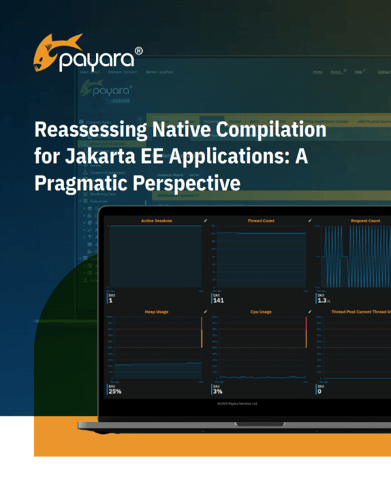Reassessing Native Compilation for Jakarta EE Applications – A Pragmatic Perspective
Published on 06 Dec 2023
 by Luqman Saeed
by Luqman Saeed
Java’s Ahead-of-Time (AOT) native compilation, as seen in frameworks like GraalVM, boasts rapid startup times and lower memory usage. However, for Jakarta EE application developers, the practical benefits of these advantages often don’t translate into substantial economic or technical gains. This leads to questioning the viability of investing resources into adapting existing Jakarta EE applications for GraalVM compatibility.
Download the Guide - Reassessing Native Compilation for Jakarta EE Applications: A Pragmatic Perspective
The journey from traditional JVM-based Java applications to native Java through GraalVM's AOT compilation presents a landscape filled with both opportunities and challenges. While the allure of improved startup times and reduced memory usage is undeniable, it's crucial for you as a Jakarta EE developer to assess the real-world applicability of these benefits. The decision to transition should be guided by a balanced understanding of one's specific application needs, the operational environment, and the broader economic implications.
This guide - download here - is aimed at developers working with Jakarta EE applications who are exploring the possibility of native compilation. We’ll explore the practical implications of transitioning to GraalVM, assess the impact of cloud environments on AOT benefits, compare JVM optimizations with AOT, and finally, weigh the business relevance of native Java.
Related Posts
Securing Jakarta EE Application Servers Needs Executive Attention
Published on 10 Sep 2025
by Asif Khan
0 Comments
The Payara Monthly Catch - August 2025
Published on 02 Sep 2025
by Dominika Tasarz
0 Comments

%20Application%20Servers-An%20Executive%20Guide%20Cover.jpg?width=500&name=Securing%20Jakarta%20EE%20(Java%20EE)%20Application%20Servers-An%20Executive%20Guide%20Cover.jpg)
